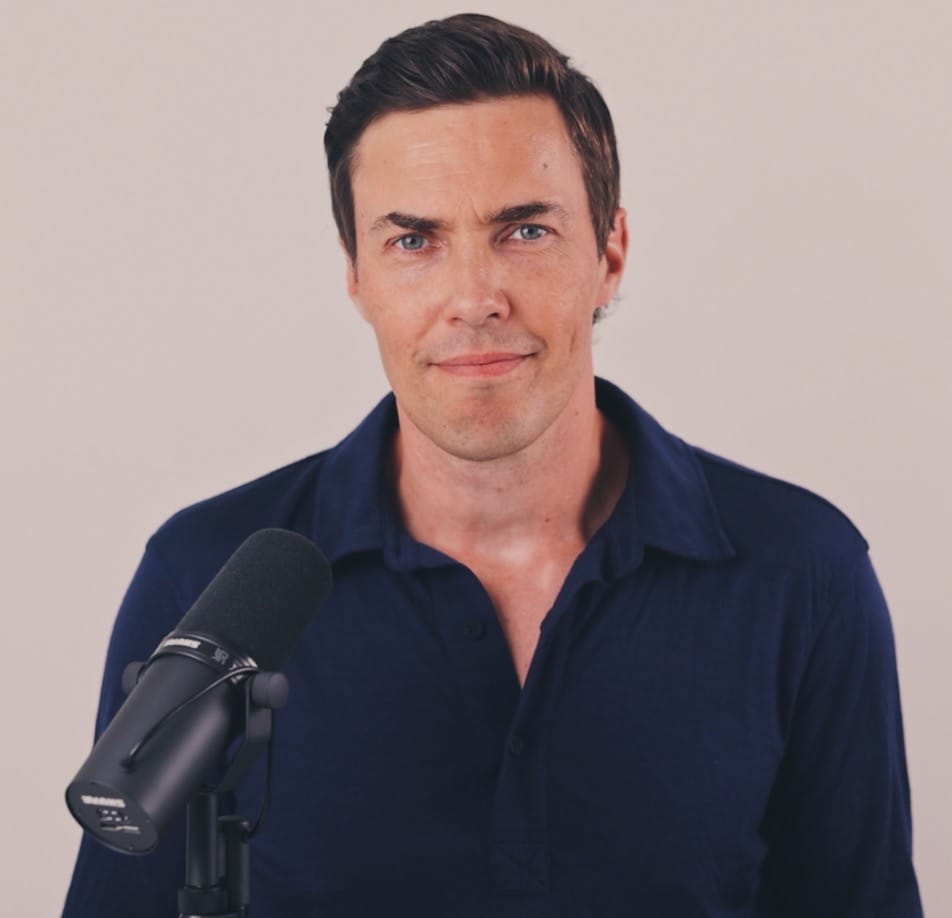The Rise of Spiritual Branding




Walk into an Erewhon, and you’ll feel it:
Not just a store — a shrine.
Buy a pair of OnRunning shoes and read the tag:
Not just a product — a practice.
Scroll through your average DTC wellness brand:
It’s not just “clean” or “natural” — it’s transcendence in a tube.
We're not just in the business of branding anymore.
We're in the business of meaning-making.
As traditional institutions lose trust, consumers are looking for new belief systems - and increasingly, they’re turning to brands.
Brands that get this aren’t just winning attention.
They’re shaping identity, habits, even worldviews.
In this Signal, we break down what’s really happening beneath the surface — and how you can build a brand that transcends the scroll and embeds into people’s lives.
Here’s what’s happening. And what to do about it.
Gen Z isn’t just buying stuff.
They’re buying belief systems.
Across wellness, fashion, food, and even fintech — the most magnetic brands are moving beyond “purpose” and into spiritual territory:
This isn’t surface-level aesthetic. It’s intentional cosmology design.
If you’re building a brand, especially in lifestyle or wellness:
You’re not competing on product. You’re competing on meaning.
Gen Z is less interested in what you sell — and more in what you stand for, what you ritualize, and how your brand fits into the identity matrix of their lives.
That doesn’t mean you need to become a cult.
It means you need to connect to culture at a belief level.
“Brand purpose” was step one.
Spiritual branding is step two.
We’ve moved past "values-based messaging.”
People want emotional frameworks, rituals, and ways of being.
This is tribal branding — not in the old marketing sense, but in the anthropological one.
Brands that embed themselves in daily rhythms, emotional highs, and identity-building moments create more than loyalty — they create followers.
We’re entering an era where the best brands act more like soft religions than storefronts.
✅ Build a brand cosmology — a system of beliefs, behaviors, language, and rituals that surround your product.
✅ Shift from “purpose” to practice — what does your brand help people do or become on a daily basis?
✅ Use design, packaging, copy, onboarding, and community to reinforce a deeper why.
Your product is the access point.
Your brand is the belief.

Signal: Trust in institutions — government, religion, media — is at all-time lows.
Why it matters: People still need structure, meaning, and identity. As institutional authority crumbles, individuals seek new belief systems — often in brands, creators, and communities.
🔗 Source: Edelman Trust Barometer, Pew Research, Barna Group
Signal: Wellness is no longer just fitness or nutrition — it’s a full lifestyle doctrine with rituals, mantras, and moral codes.
Why it matters: Brands in wellness, fitness, and even finance are mimicking the structure of religion — promising transcendence, community, and healing.
📚 See: “The Gospel of Wellness” by Rina Raphael; Goop, Erewhon, Lululemon
Signal: People crave routine and ritual to cope with chaos and decision fatigue.
Why it matters: Brands that offer ritualized experiences (daily supplements, skincare routines, meditative products) embed themselves deeper in people’s lives and identities.
🔍 Examples: Aesop handwashing, Seed probiotics, Calm app routines
Signal: A growing share of consumers — especially Millennials and Gen Z — identify as “spiritual but not religious.”
Why it matters: These consumers are open to transcendent experiences, symbolism, and belief systems — but outside formal religion. Brands that tap into this vibe without crossing into cringe can win deep emotional loyalty.
🔗 Source: Pew Research on SBNR growth
Signal: People are buying less, but more intentionally. They want what they buy to matter — emotionally, symbolically, socially.
Why it matters: Functional utility is not enough. Every purchase must say something about who I am and what I value.
🛍️ Minimalism shifts from aesthetic to philosophy
Signal: In a hyper-fragmented digital world, people feel overwhelmed by content but underfed in meaning.
Why it matters: When identity is constantly shifting (via algorithm), people look for anchoring brands that give them a narrative, a “why,” a core self.
📱 Brands that behave like philosophies (not just feeds) stand out.
Signal: Content creators and brand founders with strong POVs are being followed with near-religious devotion.
Why it matters: Brands led by strong beliefs, clear values, and repeatable messages resonate — especially when paired with lifestyle aesthetics and identity cues.
🙌 Example: The rise of founder-led, spiritually-tinged brands like Kin Euphorics, Sakara, or even The Class.
Signal: High-end brands are dropping “aspiration” in favor of “transcendence.” Think sacred packaging, ceremonial product drops, and mood-altering soundscapes.
Why it matters: Even premium brands are realizing it’s not about status anymore — it’s about spiritual symbolism, personal elevation, and inner transformation.
🧘♀️ See: Hermès Beauty, Loewe candles, Hauser & Wirth
We are living in a meaning vacuum.
People are looking for structure without dogma, ritual without religion, and identity without institutions.
The most culturally tuned-in brands are filling that void —
not with louder ads, but with belief, ritual, and emotional clarity.
🔁 Culture is shifting fast.
Gen Z doesn’t want another brand.
They want something to believe in.
Make it meaningful — or make it forgettable.
📬 Want help designing your brand's belief system? We build frameworks like this inside SimpleOS™ and The Growth Accelerator. DM me or apply at originalminds.co.